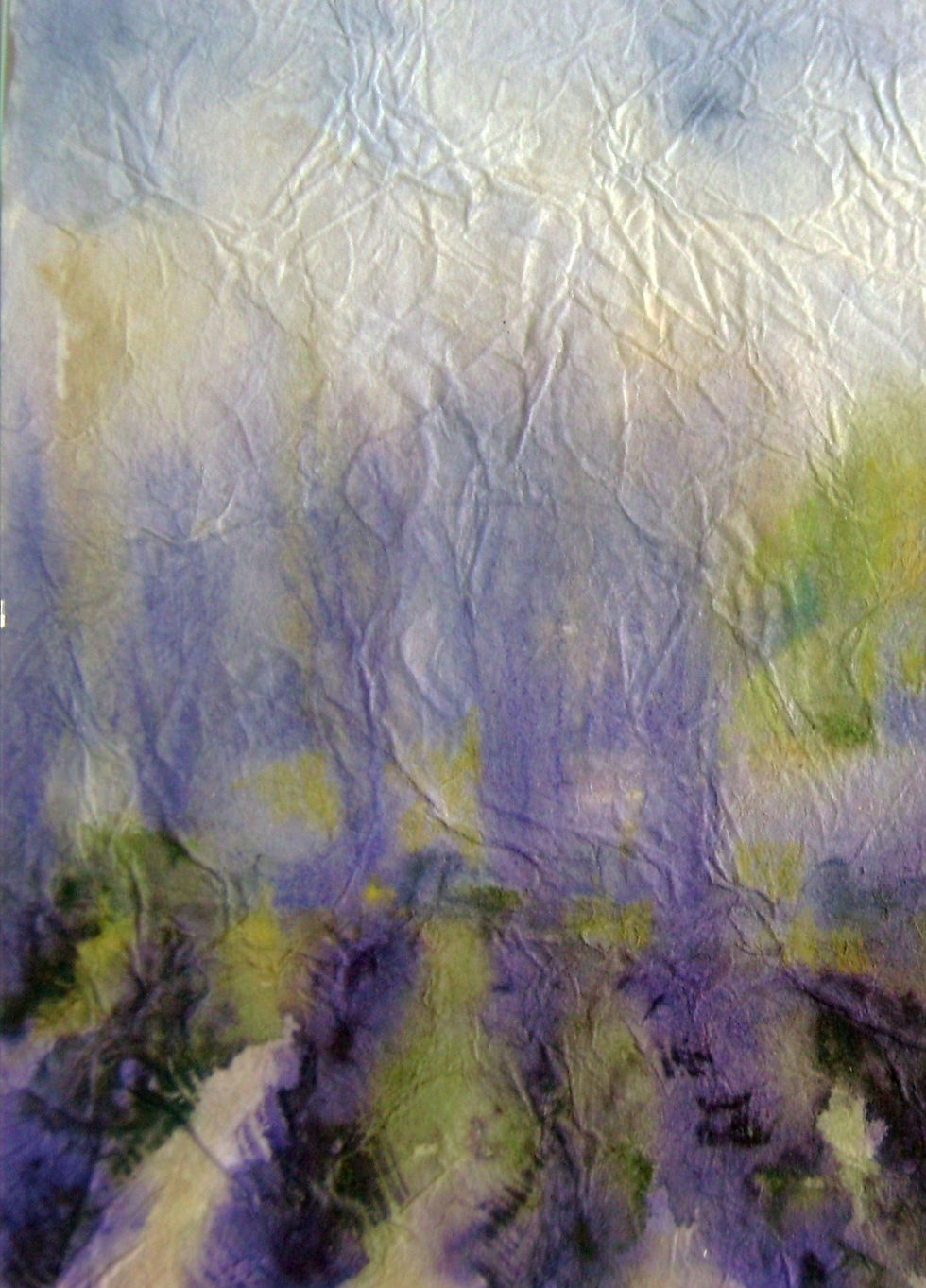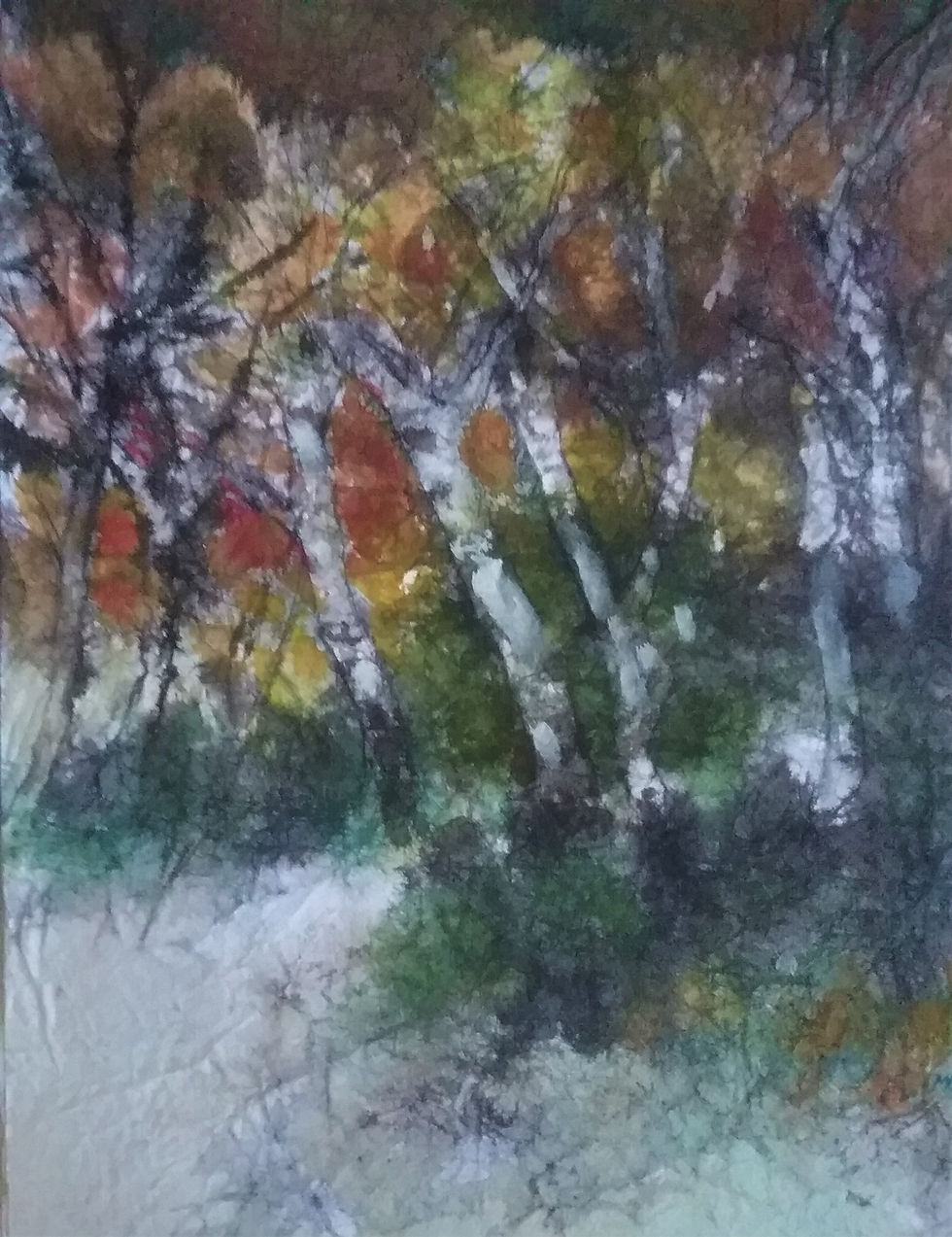- Marjorie Vernelle
- Jan 13, 2020
- 3 min read
Updated: May 7, 2021

Every artist has decisions to make about his or her creative activity. Being instinctively drawn to watercolor (just call me a true Pisces), I had to face the normal reaction to the medium. "Watercolor. Oh it's nice, lovely really, but it's so hard to do. You can't get the same visual effects like oils; it doesn't have a glossy shine (like oils); you can't get textured surfaces (like oils); and it is impossible to control. But it's good for coloring things." Damned from the beginning for its very essence, watercolor suffers from being a medium that depends upon that life-giving and life-threatening substance that man has always struggled to control: water. Not only all that, but when you go to an art school, watercolor is subsumed by Illustration. In rare cases, there may be a "Watercolor I" course, but after that you are on your own in a brave new world. (See my post in this blog "The Strange Existence of Watercolor," October 12, 2019). Oh what a weary load a watercolorist must tote.
However, despite the disparaging comments and the efforts of watercolor societies to establish well-defined rules of excellence, for me watercolor is kind of a break out medium. Like a spillway from a dam or a reservoir, it likes to be free, and nothing is better than free. However, freedom is not a state of irresponsibility. It requires that you think about which direction you go and what the end goal will be. One of the things I decided upon was to add texture, something not much associated with watercolor paintings. But how? Well, here is where an intercultural aspect comes in. The Japanese make various types of rice paper, in particular Kozo and Masa, which create wonderful surfaces to paint on, but only in watercolor and/or ink.


In the two pieces above, in fact in all three pieces above on this page, I decided to use Masa paper, on the rough side rather than the smooth side, in order to take advantage of the fibrous quality of the paper. However, my other decision was to create an imagined reality made from the water carrying the colors to blend, float, jump over some areas and pool in others to make another vision of landscape.

As I mentioned one can use watercolor or ink or both on these rice papers. If the choice is the use of ink, then the preferred paper would be Kozo. To create a batik look, like that in the painting Autumn Forest, you only have to float the paper atop a butcher's tray of water in which artist's ink has been scattered. The Kozo picks up the ink, leaving an abstract trace on the paper's surface. From there the imagination, once the ink dries, finds the painting. Above I went for a forest in autumn with shrubs, a simple theme hopefully made more interesting by mottled colors and the texture of the rice paper.
Finally, another way to add that extra dimension is to build up the surface with an acrylic medium. Though the height would be minute, by choosing the areas you wish to have affected, you can create the look of a rugged surface. As the watercolor comes into contact with the acrylic medium, it will color some of it, but will run off into areas with less medium, making an uneven, rocky-looking surface.

My greatest delight was when I went to have this piece framed. While looking for an appropriate frame for the narrow wall space I had, I heard a lady at the counter where I had left the painting ask about the piece. The clerk told her to go ask the artist and pointed her in my direction. She came over and complimented me, then asked, "Where is this beautiful place?" I could only reply, "Somewhere west of the imagination."
Of course, I do paintings that look more like normal landscapes (See the Land and Sea section of this website), but even those are just memories, and we all know what memory does to images. However, that is what I like, being free to create out there, somewhere west of the imagination.
So what about these wild ideas? How do you approach creativity? Log in and comment, and while you are here, please enjoy some of the other posts.
For more on Marjorie Vernelle, see the author page at amazon.com/author/marjorievernelle
She also has an engaging art history blog that talks of painting and wine on ofartandwine.com
© Marjorie Vernelle 2020
Remember, Art loves you, so return the favor.












